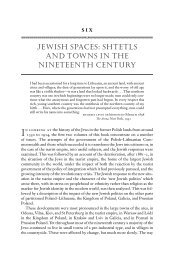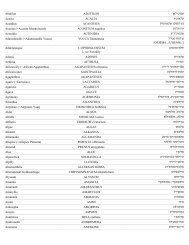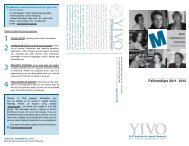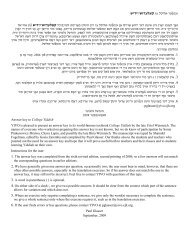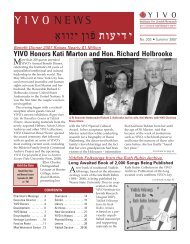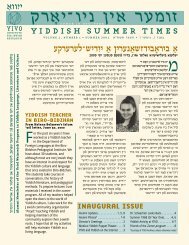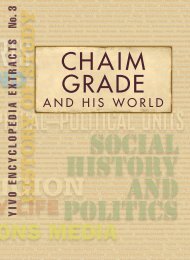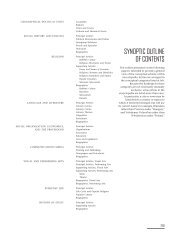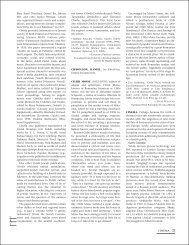Here - YIVO Institute for Jewish Research
Here - YIVO Institute for Jewish Research
Here - YIVO Institute for Jewish Research
You also want an ePaper? Increase the reach of your titles
YUMPU automatically turns print PDFs into web optimized ePapers that Google loves.
spectrum can be discerned especially in the films madeby members of American “landsmanshafts”, organizationsof immigrant Jews from the same locality, whichoften tried to organize help <strong>for</strong> their <strong>for</strong>mer communitiesin Poland. Pesach Zukerman’s film, shot in 1929 on behalfof the Kolbuszower Relief Society, was just such a reporton the economic and social conditions of the local <strong>Jewish</strong>community in Kolbuszowa. Thanks to numerous screeningsof the film in the United States, the society raisedfunds not only <strong>for</strong> the citizens of Kolbuszowa, but also <strong>for</strong>those of nearby towns, including Sokołów, Rzeszów andRaniżów. Similarly, the film from Nowogrodek was madeby Alexander Harkavy, president of the NowogrodekRelief Committee in New York, which the citizens ofNowogrodek had turned to <strong>for</strong> help in 1930. These andmany other films show the difficult economic situation ofthe <strong>Jewish</strong> population throughout interwar Poland—onethat only worsened as the economic crisis deepenedand anti-Semitic attitudes became more pronounced.During this period, many Polish <strong>Jewish</strong> organizations,as well as <strong>Jewish</strong> entrepreneurs and retailers, barelymanaged to make ends meet, dependent on the financialsupport of <strong>Jewish</strong> organizations from abroad—financingthat was distributed through a network of loan associations(“gmiles chesed”) set up in towns and citiesthroughout Poland.Concentrating on smaller towns and the lives of largelyimpoverished relatives, visitors seldom turned theircameras on in the large urban areas that functioned asthe birthplaces of vibrant political and cultural life—thosecities that were home to an active <strong>Jewish</strong> intelligentsiaand witnessed the rise of <strong>Jewish</strong> press, theater, cinema,politics and sports. Thus, although these films provide anaccurate picture of <strong>Jewish</strong> towns, they do not give a completeview of <strong>Jewish</strong> life in interwar Poland, where, asidefrom religious life and autonomous <strong>Jewish</strong> institutions,there was also increasing polonization and assimilation,coupled with the rise of a modern <strong>Jewish</strong> culture. Thisaspect of <strong>Jewish</strong> life is only dimly present in theseamateur films, mostly visible in the modern appearanceof the young men and women who stand in contrast tothe traditional lifestyles of their parents and grandparents.Above all, modern Polish <strong>Jewish</strong> life is best expressedin shots of the busy streets of Warsaw, Łódź and Vilna,moments captured by the camera of Gustaw Eisner, atravel agent originally from Łódź who organized trips<strong>for</strong> Americans to their native lands. “I set my camera inmotion as soon as the ship pulled out of the New Yorkharbor. I am recording my whole trip and hope in thisway to share with my friends when we return to Americaall that we have seen,” Eisner wrote to a friend in 1931.During his two visits to Vilna, Eisner also filmed import-



